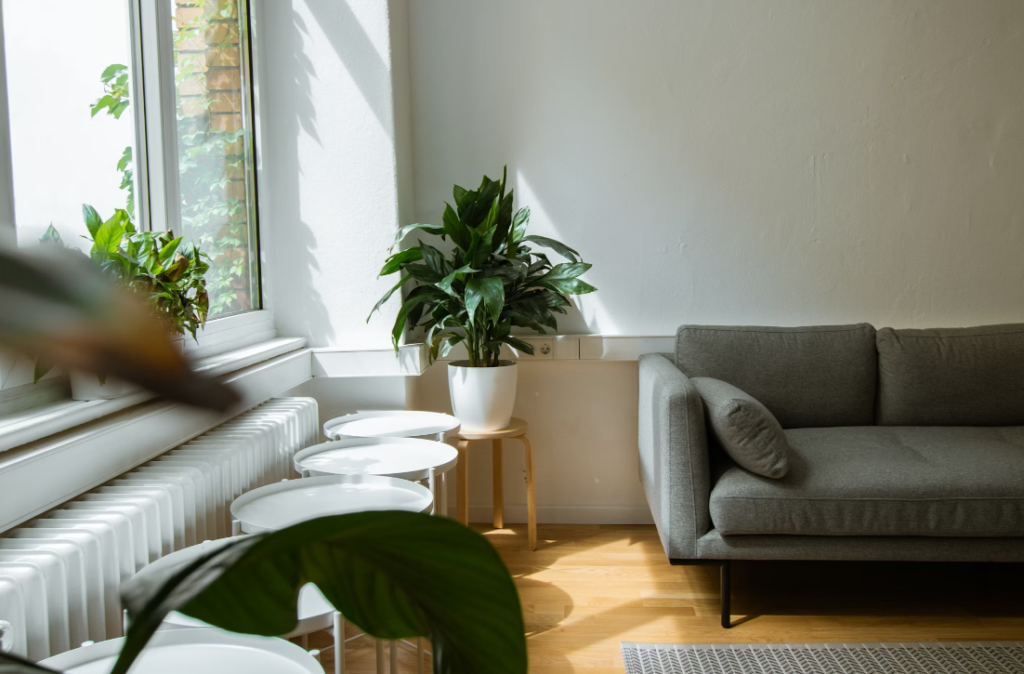-
Shop
- Furniture
- Kitchen
- Bathroom
- Home & Garden

Is your once comfy couch feeling a little… damp?
Don’t worry. A damp couch happens, but the good news is there are easy fixes to get your couch feeling fresh again.
In this post, I’ll shed some light on why your couch feels damp, and what you should do.
Here are some of the main reasons why your couch might feel damp:
Also Read: leather sofa puddling
High humidity levels can be a significant contributor to a damp couch.

In places where there’s a lot of moisture in the air, that extra moisture can collect on cool surfaces like your couch.
This makes it feel wet and uncomfortable.
Plus, if your couch is by a window or in a room where the temperature changes a lot, water can build up on its surface, making it damp.
Apart from that, if there are leaks from plumbing, the roof, or water seeping in through the windows, that moisture can end up on your couch too.
Spills from beverages or food are also common reasons.
When you spill liquids, they can seep into the couch cushions and fabric, leaving behind moisture and possibly causing stains or smells.
Pet accidents can also leave behind moisture and stains on your couch.
Also, if lots of people use the couch often, sweat or body moisture can build up over time, adding to that damp feeling.
BTW, check out our: Elegant Minimalist Tiger Velvet Lounge Chair
Not letting your sofa dry properly after cleaning can also make it feel damp.

If you’ve cleaned your couch recently and it hasn’t dried completely, the leftover moisture can make it feel wet.
Using too much water or cleaning products when you clean the couch can also soak it too much, making it take longer to dry and possibly causing the issue again.
Sofas made with leather or microfiber, might feel a bit damp when they’re brand new.
This is usually because of the materials themselves and should go away as you use the couch more.
Plus, new furniture can release certain volatile organic compounds (VOCs) during the off-gassing process, which can make the couch feel slightly damp or smell.
Now that you know why your sofa feels damp, here’s what you can do about it:
If high humidity is the issue, using a dehumidifier can help.
It’ll remove excess moisture from the air and prevent condensation on your couch.
Also, make sure there’s good airflow in the room by opening windows or using fans to move the air around. That can help lower humidity levels too.
Double check for leaks or water damage and deal with them right away too.
Fix any leaks from plumbing, the roof, or windows to stop more moisture from building up and causing more damage.
If something spills or there’s an accident on your couch, it’s really important to act fast.
Use a clean cloth or paper towels to soak up the spill right away, so it doesn’t sink into the couch and make things worse.
For a deeper clean, you can use a good upholstery cleaner or an enzymatic solution to clean and disinfect the spots.
If there are tough stains or smells that won’t go away, you might want to think about hiring professionals to clean the upholstery—they can often get rid of the problem more effectively.
BTW, check out our: Modern Nordic Single Sofa Chair
Always follow the manufacturer’s instructions when you’re cleaning your couch.
Different materials might need different cleaning products or methods to make sure they get clean without getting damaged or too wet.
Pick cleaning products made for upholstery and don’t use too much water or strong chemicals that could soak the couch and take a long time to dry.
After you’ve cleaned it, make sure the couch dries all the way.
You can use fans or dehumidifiers to help, or you can just put it in a spot with good airflow.
If your couch is brand new, don’t worry too much.
It’s usually just a temporary thing that should go away within a few weeks or months.
In the meantime, you can try using couch covers or throws to protect the couch and keep direct contact with the damp surface to a minimum.




Leave a comment